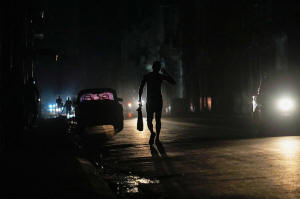|
The ministry said on its account on the social platform X that
it is “working on the recovery process.”
The streets of Havana were dark and empty, with light coming
only from the windows of hotels that had generators. Internet
service was affected.
People in provinces as far away as Guantánamo, Artemisa,
Santiago de Cuba, and Santa Clara reported experiencing
blackouts with just flickers of light.
Earlier, the Electric Union, the state agency that regulates the
sector, said in its daily report that peak-hour demand would be
around 3,250 megawatts and the deficit would reach around 1,380
megawatts, meaning 42% of the national energy system would be
shut down. This figure is not the highest in recent memory.
Cuba suffered th ree widespread outages in its national energy
system at the end of last year, leaving the island in the dark
amid a serious economic crisis.
Cuba’s power grid has been plagued by frequent outages, with
more than half of the country experiencing power cuts during
peak hours. The outages are primarily caused by fuel shortages
and aging infrastructure. In many parts of the island,
electricity is crucial for cooking and water pumping.
Authorities on the island have begun a program to install
photovoltaic parks and promised that dozens of them will be
ready this year. Blackouts previously prompted anti-government
demonstrations in 2021, 2022, and 2024.
All contents © copyright 2025 Associated Press. All rights
reserved |
|




